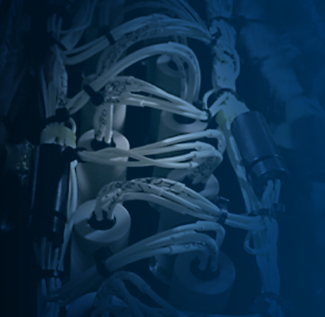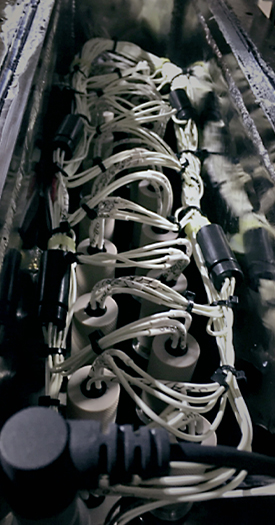Baker Hughes Increases Reliability and Efficiency with Greene Tweed Seal-Connect Connections and Electrical Harness Assembly


Challenge
Baker Hughes, a Greene Tweed customer, had electrical terminations that required enhanced reliability and efficient design to protect against contamination and interference.
Baker Hughes’ new subsea control system, the SeaPrime MUX Blowout Preventer (BOP) Subsea Control System, designed for offshore and subsea environments, was developed to utilize the highest quality connectivity solutions, in both the 1 ATM and pressurized housings. While designing the system, Baker Hughes identified the need for a complete electrical harness assembly. Without a harness, sensitive electrical terminations would be exposed to contamination within the oil. Over time, this exposure could cause reliability issues or signal loss.
The Baker Hughes development team turned to the experts at Greene Tweed for a solution.
Solution
Baker Hughes was using Greene Tweed Seal-Connect® electrical connectors but without harnessing, resulting in disorganization of individual wires. The wiring was difficult to service in the field, and the entire harness was simply replaced instead of taking the time to sort through the wires. The new harness provided to Baker Hughes simplifies the assembly and maintenance process.
Designing a harness assembly that could be easily installed in the field required extensive involvement from Greene Tweed applications engineering, process engineering, and assembly operators. All three groups collaborated with Baker Hughes to provide the entire turnkey solution, which provided value when compared to a collection of loose components. More than 80 individual wires needed to be correctly routed from one part to another, with unique labeling for each wire.
After months of co-development of the harnesses, a heavy-duty, pressure-ready interconnect was created. This instrument harness is unique in that it employs Greene Tweed’s splice technology, which is sealed to mitigate moisture ingress and further extend the life of splice terminations. Splices were potted using epoxy prior to attaching to the harness. Experience has shown that this type of interface eventually leaks; therefore, Greene Tweed’s booted splices offer a more robust and durable sealing interface, which enabled Baker Hughes to reduce the number of conductors feeding the instruments.
Greene Tweed provided the following boot kit products and materials:
• Seal-Connect® Multi-Pin Connector - Arlon® 2000 (PEK)
• Seal-Connect® Contact Block - Arlon® 1000 (PEEK)
• Seal-Connect® Boot - Fusion™ 755 (FKM)
• Boot kit accessories (plug, caps) - Arlon® 1000 (PEEK)
Results
The project necessitated a long-term, ongoing partnership between Greene Tweed and Baker Hughes.
Working side by side, the Greene Tweed team delivered two complete assemblies to Baker Hughes on schedule. The harnesses were installed in the prototype units and have been subjected to multiple layers of validation testing, including signal and pressure tests to ensure signal integrity under the harshest conditions. The instruments continued to operate reliably by delivering their data stream to the control system.
The solution simplified the electrical architecture using components with years of in-service proven reliability while maintaining the same level of quality and reliability expected of a safety control system.
Benefits
• Improved reliability
• Efficient design
• Turnkey solution aligned to customer requirements
• Simple and time-saving assembly